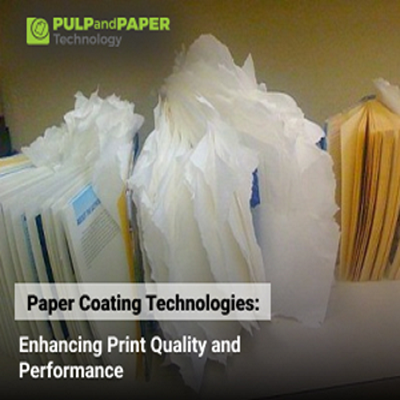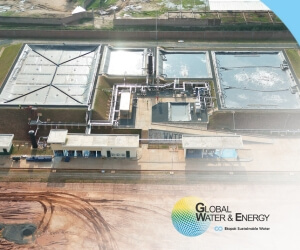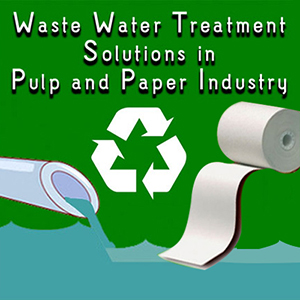Paper Coating Technologies: Enhancing Print Quality and Performance

In the world of printing and publishing, paper coating technologies play a pivotal role in the enhancement of print materials. Whether it's a glossy magazine, an eye-catching advertisement, or an informative brochure, the coating on paper significantly influences the final visual appeal. From providing a smooth surface for vibrant ink adhesion to ensuring protection against wear and tear, paper coatings are an indispensable aspect of the printing industry, influencing how we perceive and interact with printed materials. In this article, we will explore the fascinating world of paper coating technologies, their impact on print quality, their role in improving the performance and durability of printed materials, and the exciting innovations shaping the future of this field.
Understanding Paper Coating Technologies
Paper coating technologies involve the application of various compounds and polymers to the surface of paper to serve a variety of purposes. These coatings are designed to improve the overall print quality, enhance the durability of the printed material, and offer a pleasing tactile experience for the end user. The two primary types of coatings frequently used in the industry are matte and glossy coatings, each offering distinct advantages based on the desired visual effect and functionality.
Enhancing Print Quality
One of the primary advantages of paper coating technologies is their ability to significantly enhance the print quality of the final product. By creating a smooth and uniform surface, these coatings enable precise ink placement, leading to sharper and more vibrant images and text. This results in improved color accuracy and increased contrast, making the printed material more visually appealing and engaging for the reader.
The application of coatings creates a smoother surface that minimizes ink spreading, leading to improved control over dot gain. Dot gain denotes the enlargement of ink dots during their transfer from the printing plate to the paper. Managing dot gain is vital for preserving intricate details and ensuring color precision in the print. These coatings act as a barrier, preventing excessive ink absorption by the paper, resulting in sharper and more vibrant images.
Improving Performance and Durability
Moreover, paper coatings contribute significantly to the durability and longevity of printed materials. By providing a protective layer, these coatings help prevent ink from smudging, reduce the risk of abrasion, and increase resistance to moisture and other environmental factors. This not only extends the lifespan of the printed material but also ensures that the visual appeal remains intact over time, reinforcing the message and impact of the content.
The protective nature of coatings is especially crucial for materials that are frequently handled or exposed to harsh environmental conditions. For example, magazines and brochures often experience wear and tear, but with the right coating, they can maintain their visual appeal and structural integrity. Additionally, coatings protect against fading, which is particularly important for materials displayed outdoors or in areas with strong sunlight.
Tactile Experience and Aesthetic Appeal
Beyond enhancing print quality and durability, paper coating technologies also contribute to the overall tactile experience and aesthetic appeal of the printed material. A glossy coating provides a smooth and reflective surface, creating a luxurious and professional feel, while a matte coating offers a sophisticated and elegant texture, ideal for conveying a sense of understated class and style. These tactile experiences significantly influence how the audience interacts with the printed material, fostering a deeper connection and engagement with the content.
Glossy coatings are recognized for their capacity to intensify colors, generating a lively and captivating impression. The sleek, reflective surface of glossy-coated paper amplifies the vibrancy and depth of colors, making it a perfect option for promotional materials like product catalogs, fashion magazines, and advertisements. Moreover, the reflective nature of glossy paper imparts a feeling of exclusivity and opulence to the printed materials.
On the other hand, matte coatings offer a more subdued and elegant appearance. The texture of matte-coated paper is non-reflective, giving it a sophisticated, tactile quality. This makes matte coatings ideal for items like art prints, high-end packaging, and materials that require a more subdued and classic aesthetic. The lack of glare on matte paper also makes it a practical choice for materials meant to be read under direct lighting, as it reduces eye strain.
Innovation and Future Trends
As technology continues to advance, so do paper coating technologies. Innovations in coating formulations and application processes are constantly being developed to meet the evolving demands of the printing industry. These innovations encompass environmental sustainability, specialized coatings for specific printing techniques, and novel materials to enhance the overall experience.
1. Environmental Sustainability:
One of the notable trends in paper coating technologies is the development of environmentally friendly coatings. With a growing emphasis on sustainability, the printing industry is actively seeking coatings that reduce ecological impact. Water-based coatings, for instance, have gained prominence as they contain fewer volatile organic compounds (VOCs) compared to solvent-based coatings, which are more harmful to the environment. This trend aligns with the broader global effort to reduce the carbon footprint and environmental impact of various industries, including printing.
2. Specialized Coatings:
In an effort to cater to specific printing needs, specialized coatings have emerged. These coatings are designed to address unique requirements based on the printing process, materials used, and the desired effect. For example, UV coatings offer excellent protection and can be cured quickly with ultraviolet light, making them ideal for high-speed printing. Spot coatings, another specialization, are used to selectively apply coatings to specific areas of a printed piece, creating dramatic visual contrast.
3. Holographic and Metallic Coatings:
Holographic and metallic coatings have gained attention for their ability to add a captivating dimension to printed materials. Holographic coatings create a three-dimensional, dynamic effect that changes with the angle of light, making them suitable for security features, packaging, and marketing materials. Metallic coatings, on the other hand, create a metallic sheen or glittering effect, adding a touch of luxury to invitations, packaging, and promotional materials.
4. Smart Coatings:
In the era of digital technology, smart coatings are beginning to make their mark. These coatings can incorporate functionalities such as conductive properties, anti-bacterial properties, and even color-changing capabilities. For example, smart coatings with conductive properties can turn paper into interactive touch-sensitive surfaces, opening up new possibilities for packaging, educational materials, and interactive marketing.
5. Emphasis on Recyclability:
The emphasis on sustainable printing practices has driven a focus on coatings that are readily recyclable. Coatings that can be effortlessly eliminated during the recycling process enhance the feasibility of recycling printed materials. Advancements in this domain can play a significant role in waste reduction and resource conservation.
6. Nanotechnology in Coatings:
Nanotechnology is being explored for its potential in paper coatings. Nano-coatings can provide enhanced barrier properties, better print quality, and even antimicrobial features. These coatings can have a significant impact on the longevity and functionality of printed materials.
In conclusion, paper coating technologies are indispensable tools in the world of printing and publishing. They play a vital role in enhancing print quality, extending the durability of printed materials, and creating a tactile and aesthetic appeal that captivates and engages audiences. The constant innovation in this field ensures that paper coatings will continue to evolve and adapt to the changing needs and demands of the industry. As technology advances, the future of paper coating technologies promises even greater versatility and sustainability, ensuring that the art of printing continues to captivate and inspire audiences around the world. Whether it's a glossy magazine, a striking advertisement, or an elegant brochure, paper coatings elevate the visual impact and lasting impression of printed materials, making them a vital component of the modern printing landscape.







